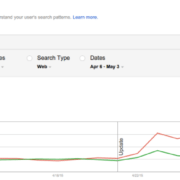Google Says it Has Now Tracked 4 Billion Store Visits From Ads
Onimod Global shares how the company says thousands more advertisers will gain access to store visits data as a result of improved measurement techniques and machine learning-powered modeling.
Ginny Marvin
Google has been ramping its efforts to tie clicks on ads to store traffic. On Wednesday, the search giant said it has now captured over four billion store visits after users have clicked on an ad, up from one billion a little less than a year ago, and is set to rapidly expand that number.
In September, Google extended the now two-year old store visits measurement program to ads on the Display Network and said it had statistically significant visibility into visits to 200 million stores globally. The company says it is now positioned to make store visits data available to thousands more advertisers due to advancements in several components of the measurement process.
Google measures store visits based on aggregated and anonymized data from users who opt into Location History tracking on their phones, Google surveys and mapping technology.
The company says that in the past month, it has shifted to using deep learning models that can train on larger data sets to increase accuracy in prioritizing location signals. “This allows us to reliably measure more store visits in contexts that are typically tricky, such as in multi-story malls and dense geographies where many business locations are situated close to each other,” Kishore Kanakamedala, director of product management for online-to-offline solutions, wrote in Wednesday.
Recent mapping improvements include a refresh of Google Earth and Google Street View images to get up-to-date views of where buildings begin and end, as well as a global effort to scan WiFi strength in more buildings to determine business boundaries.
Google surveys some users to verify the locations they’ve visited and then reconciles that feedback against its predictions to continue training the models. In addition, Google says it now has teams that conduct in-person audits and site visits, particularly in high store density areas, to provide more data.
In November, Google added store visits data to distance and location reports in AdWords to provide more detail on how far users were from a store location when they clicked on an ad and what areas drive the highest volume of store visits, down to the postal code.










